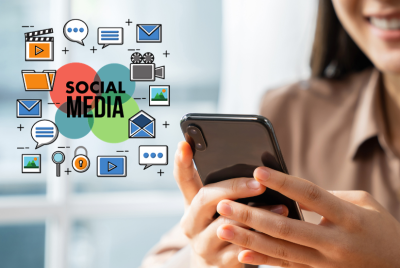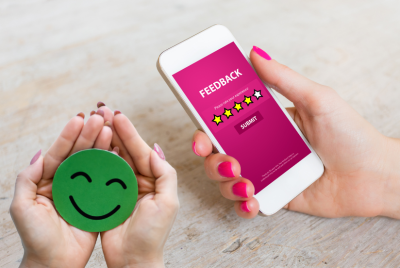Unlocking the Power of the Customer Acquisition Funnel
Have you ever wondered how successful businesses continually attract and convert new customers? The answer lies in a strategic and well-optimized process known as the Customer Acquisition Funnel. In this comprehensive guide, we’ll dive deep into this essential marketing concept, exploring every aspect to help you harness its potential for your own business.
What is the Customer Acquisition Funnel?
Before we venture further into the realm of customer acquisition, let’s establish a solid understanding of the customer acquisition funnel itself.
The Customer Acquisition Funnel is a model that maps out the journey a potential customer takes, from initial awareness to making a purchase and becoming a loyal advocate. This strategic framework is a cornerstone of modern marketing and sales, enabling businesses to systematically attract, engage, and convert leads into paying customers.
Stages of the Customer Acquisition Funnel
The customer acquisition funnel consists of several distinct stages, each with its own unique characteristics and objectives. Let’s break down these stages to provide you with a comprehensive view.
1. Awareness Stage
At the top of the funnel, we have the Awareness Stage. This is where prospective customers first become aware of your brand, product, or service. It’s the initial spark, the first step in building a relationship with potential buyers.
Strategies for the Awareness Stage
- Content Marketing: Craft blog posts, videos, and social media content to capture your audience’s attention.
- SEO Optimization: Ensure your online presence is easily discoverable through search engines.
- Paid Advertising: Use platforms like Google Ads or Facebook Ads to target a broader audience.
2. Interest Stage
As prospects move down the funnel, they enter the Interest Stage. During this phase, they are exploring your offerings more deeply, showing a genuine curiosity.
Strategies for the Interest Stage
- Email Marketing: Send informative newsletters, product updates, and exclusive offers to maintain engagement.
- Webinars and Workshops: Offer webinars and workshops that provide valuable insights and establish your authority.
- Remarketing: Use retargeting ads to keep your brand in front of potential customers who have shown interest.
3. Consideration Stage
The Consideration Stage is where potential customers start comparing your offerings with alternatives. They are close to making a decision, and your goal is to sway them in your favor.
Strategies for the Consideration Stage
- Case Studies: Showcase success stories and customer testimonials to build trust.
- Free Trials and Demos: Allow prospects to experience your product or service firsthand.
- Comparison Guides: Create content that highlights the advantages of your offerings over competitors.
4. Conversion Stage
The pinnacle of the funnel is the Conversion Stage. At this point, your prospects have decided to make a purchase. Your role is to guide them through a seamless and persuasive buying process.
Strategies for the Conversion Stage
- Streamlined Checkout Process: Make the purchase as easy as possible, with minimal friction.
- Incentives: Offer discounts or limited-time promotions to nudge prospects toward the final decision.
- Effective CTAs: Use compelling Calls to Action that prompt immediate action.
5. Loyalty Stage
Once a prospect becomes a customer, the journey is far from over. In the Loyalty Stage, your focus is on retaining and delighting your customers.
Strategies for the Loyalty Stage
- Customer Support: Provide excellent customer service to address inquiries and concerns.
- Exclusive Benefits: Offer loyalty programs, discounts, or early access to reward customer loyalty.
- Request Reviews: Encourage satisfied customers to leave reviews and testimonials.
Optimizing Your Customer Acquisition Funnel
Now that you understand the stages of the customer acquisition funnel, it’s time to dive into the nitty-gritty of optimizing this process for your business.
Creating a Compelling Value Proposition
Your value proposition is the heart of your funnel. It’s the unique promise that differentiates your product or service from the competition.
To craft a compelling value proposition:
- Identify your target audience’s pain points and needs.
- Highlight the specific benefits of your offering.
- Be clear and concise in your messaging.
Leveraging Data Analytics
Data is your secret weapon in optimizing the customer acquisition funnel. Analyzing customer behavior, traffic sources, and conversion rates provides valuable insights.
Use data analytics to:
- Identify drop-off points in your funnel.
- Personalize your marketing efforts.
- Continuously refine your strategies.
A/B Testing for Continuous Improvement
A/B testing involves comparing two versions of a web page or marketing material to determine which performs better.
Use A/B testing to:
- Optimize landing pages for higher conversion rates.
- Test different email subject lines and content.
- Experiment with ad copy and visuals.
Frequently Asked Questions
FAQ 1: What’s the ideal duration for each stage of the funnel?
The duration of each stage can vary depending on your industry and specific circumstances. Generally, the Awareness Stage is longer, and the Conversion Stage is shorter. It’s essential to monitor your data and adjust accordingly.
FAQ 2: Can a customer move back up the funnel?
Yes, customers can move back up the funnel, especially if you provide ongoing value, engage with them through content, or offer new products and services. The funnel isn’t strictly linear.
FAQ 3: How can I measure the effectiveness of my customer acquisition funnel?
Key performance indicators (KPIs) like conversion rates, customer acquisition cost, and customer lifetime value are excellent metrics to gauge the effectiveness of your funnel.
FAQ 4: Should I segment my audience in the funnel?
Segmenting your audience can be highly effective. It allows you to tailor your marketing efforts to specific groups, addressing their unique needs and pain points.
FAQ 5: Is social media advertising a must for customer acquisition?
Social media advertising can be powerful, but it’s not the only channel. The choice of advertising channels should align with your target audience and business goals.
FAQ 6: What are common pitfalls to avoid in customer acquisition?
Common pitfalls include ignoring data and failing to adapt, not understanding your target audience, and having an unclear value proposition.
Conclusion
The Customer Acquisition Funnel is a dynamic and flexible model that empowers businesses to systematically attract, engage, and convert potential customers. By understanding its stages and implementing the right strategies, you can drive your business towards sustained growth and success. Remember, the key lies in optimizing your funnel, leveraging data, and continuously improving your approach.
Now that you have a comprehensive grasp of the customer acquisition funnel, it’s time to put this knowledge into action. Start by analyzing your current strategies, identifying areas for improvement, and crafting a compelling value proposition. With dedication and the right tools, you can unlock the full potential of your customer acquisition funnel and watch your business flourish.




